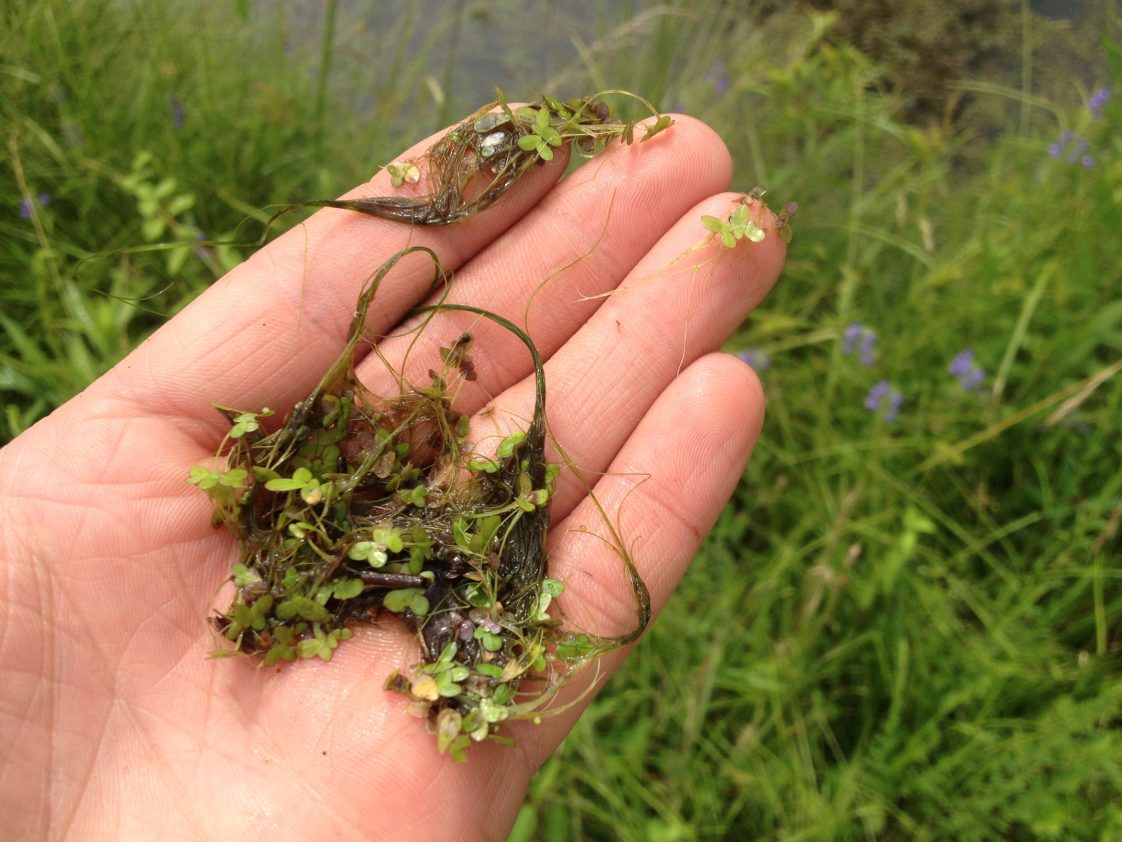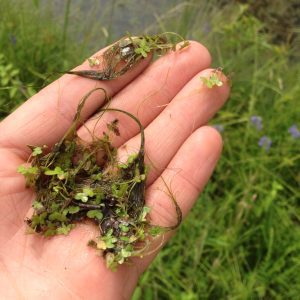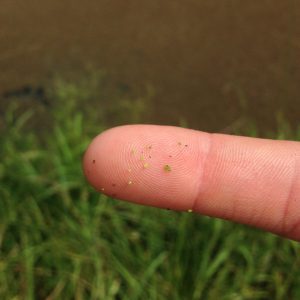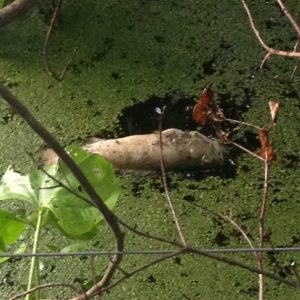Fish & Water

During the summer, Alabama Cooperative Extension System’s forestry, wildlife and natural resources agents across the state frequently receive questions about identifying and controlling two invasive growths: duckweed (Lemna spp. and Spirodela spp.) and watermeal (Wolffia spp.). These two small, floating weeds generally become most problematic during summer and are commonly found growing alongside one another. In many cases, duckweed and watermeal can completely cover the surface of small ponds in just a few weeks. This creates problems not only with common pond uses–such as fishing, swimming, irrigation, and aesthetics–but it can also create substantial fish kills by shading out sunlight, which is required for oxygen production.
Identification
Identifying duckweed and watermeal is fairly easy, as both plants have distinct characteristics. From a distance they can give the appearance of a heavy plankton bloom or filamentous algae mat, but when standing at the water’s edge, one can quickly see that the growth is actually free floating and comprised of millions of small, individual plants.
Duckweed can be described as a free-floating, light-green plant that resembles miniature clover. It is often smaller than a pinky fingernail and has 2 to 4 hair-like, white roots on the underside. Watermeal–the smallest flowering plant on Earth–is best described as light-green, rootless grains that actually have the texture of cornmeal when in hand. Oftentimes the wind will gather or blow the mats of growth throughout the pond.
- Duckweed
- Watermeal
- Fish kill caused by duckweed
Control
Although prevention by reducing water clarity with dyes or fertilizer is one of the most effective methods to reducing aquatic weeds issues, little can be done to prevent duckweed and watermeal infestations. In general, they thrive in small, shaded ponds that are blocked from the wind. Like any other aquatic weed, excess nutrients can substantially increase their growth. Wise land-use practices–such as avoiding adding grass clippings, slowing runoff through vegetated buffers, and excluding livestock from the pond (waterfowl included)–can significantly reduce the nutrients that cause significant infestations.
Fish
Stocking grass carp is generally a good option for controlling most aquatic weeds. However, they are not effective for the long-term control of duckweed and watermeal control, as both species are generally too small for the carp to effectively consume. Tilapia have been shown to control but not eradicate watermeal and duckweed, although they are generally only cost-effective in small ponds. Stocking tilapia may be the only option for control in ponds used for irrigation. Tilapia should be stocked at rates of 25 to 50 pounds per acre. Because they cannot survive as water temperatures fall below 50 degrees Fahrenheit, tilapia are only effective for one season and must be restocked annually. In ponds that have largemouth bass, owners must stock the pond with tilapia that are larger than 5 inches so that they won’t be consumed. To find a list of tilapia producers and dealers, visit www.aces.edu.
Herbicides
Aquatic herbicide applications are generally the most economical and effective option for controlling duckweed and watermeal. There are only two herbicide active ingredients that are labeled for control of both species: flumioxazin and carfentrazone. Brand names that include flumioxazine are Clipper, Depth Charge, FLUMIGARD, KnockDown Defense, and PROPELLER. The brand name that includes carfentrazone is Stingray.
Flumioxazin is a flowable granule that is dissolved into a solution, while carfentrazone is a liquid. Both products require even distribution throughout the pond and along the shoreline with a spray tank in order to be effective. It is important to spray the margin around the perimeter of the pond carefully, as duckweed and watermeal along the shoreline can otherwise escape treatment. As with any pesticide application, be sure to follow the label accordingly, and only apply when water temperatures are above 60 degrees Fahrenheit. Control can vary from season to season, as duckweed and watermeal can easily infest a pond again from sources within the watershed (i.e. infested wetlands and ponds) and by hitchhiking on waterfowl and shorebirds.
In the Alabama Extension Aquatic Weed Management video series, there is a video that outlines chemical control and gives good visuals to controlling duckweed and watermeal. You can find this series on the ACES – Fresh from the Field YouTube channel.
More Information
More information on this and other topics is available by calling or visiting your county’s Extension office or visiting the Alabama Extension website, www.aces.edu




